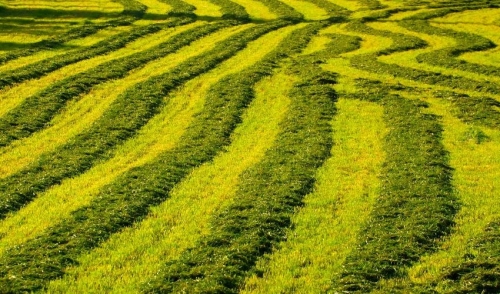
Pasture Management
A pasture is much more than just a field for your animals and livestock. A pasture provides nutritional forage, exercise space, safety, and mental stimulation. Whether you have horses, cattle, sheep, goats, llamas, or any other livestock, proper pasture management can help your land meet your animal’s needs for healthy, productive lives.
Why Pastures Need Managing
As pastures are used, their condition changes. Grasses can become overgrazed, allowing weeds and other undesirable growth to gain a foothold in the field. Excess manure can increase the parasite load of the land, spreading diseases among animals. As animals roam over the same space, the soil becomes compacted, which will choke off roots, stunt new growth, and impede proper drainage. Furthermore, if animals are kept in the same space without any change, they can become bored and restless, leading to behavioral problems or a general loss of productivity. By properly managing a pasture, however, the land will stay in peak condition and the animals that use it will thrive.
Steps for Effective Pasture Management
There are many different options for managing a pasture, and the exact steps that will work best for your fields will depend on their overall size and condition, the animals in each pasture, and seasonal changes. To make the most of your pasture, it is important to practice…
- Pasture Rotation – Regularly moving animals to a different pasture not only gives each field an opportunity to rest and recover its natural balance, but the animals will be stimulated and engaged by a new environment. How often animals should be moved depends on the field size and number of animals, but they should generally be moved several times a year.
- Soil Testing – Soil quality and composition should be tested in different parts of your pasture to check pH, nutrient composition, fertility, and other characteristics. This will allow you to fertilize or amend your pasture as needed to promote healthier soil and better field growth. Recheck the soil every few years to maintain its quality.
- Reseeding – If your pasture is heavily grazed, reseeding can help replenish grass and minimize weeds or other unwanted plants from taking over the field. Reseeding is also an opportunity to introduce different plants to a pasture to better enrich the soil or improve your livestock’s forage quality.
- Aeration – As the pasture is walked over by animals or heavy equipment is used for feeding, harrowing, or other tasks, the soil becomes compacted. Regular aeration will improve the soil texture for better drainage, stronger root growth, and improving organic material in the soil for the best grass growth.
- Manure Collection – Some manure will naturally decompose in the pasture and enrich the soil, but if too much manure collects in the field, it will harbor parasites and can be unhealthy for your livestock. Regularly breaking up manure to expose it to the elements will speed decomposition, or excess manure can be collected and removed from the field.
- Mowing and Trimming – While your livestock will naturally keep the pasture trimmed by grazing, if their grazing is uneven or some dead plants are left behind, new growth can be diminished. Trimming the field to an even length will encourage new, nutritious growth your livestock will love.
- Weed Control – Weeds will naturally encroach on even the best-kept pasture from adjacent land or through airborne seeds. Regularly patrolling your pasture and keeping a watchful eye out for unwanted weeds will make it easier to control unwanted growth, particularly for any plants that may be toxic or dangerous for your livestock.
- Fence Repair – To keep your animals safe in your pasture, it is essential to check fences, gates, cattle guards, locks, windbreaks, and other structures regularly to be sure there are no breaks, loose panels, or other weaknesses. Check fence integrity along the entire length at least once a year, and look for loose nails, screws, broken boards, and other issues that could cause injuries to the animals.
- Welcome Wildlife – A healthy pasture is one that not only nurtures your livestock, but also welcomes regional wildlife. Birds, mice, snakes, and other pasture residents help keep a natural ecological balance by eating bugs and weed seeds, helping maintain your pasture in peak condition. Using hedge barriers or allowing more diverse growth in your pasture will ensure wildlife is right at home alongside your livestock.
The better your pasture is managed, the better it will be for your livestock, and the healthier and more productive each animal will be. By catching problems early and staying alert to changes in your pasture, you can manage it more effectively and keep a rich, healthy field that will nurture all your animals.
